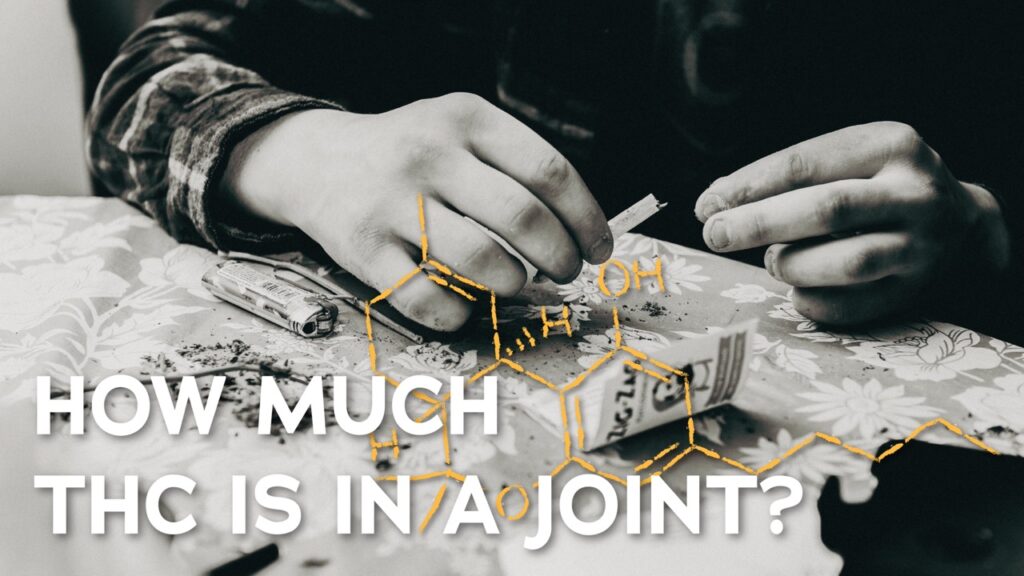When you visit a dispensary, you’ll usually see deals on half-gram and full-gram joints packaged in the same plastic tubes and rolled in the same standard papers. Because of this, it’s easy to assume that all of these joints a basically the same. Well, we’re here to tell you the truth!
If you’ve ever wondered how much THC is in a joint, you’re not alone, but the truth is it’s a bit more complicated than that. If you’ve ever purchased flower or used a cannabis vapor device, you’re likely familiar with a few different cannabis cultivars. These cultivars play a huge part in what’s in your joints among other things, so let’s get into it.
What is a Cultivar?
The THC content in your joint can vary depending on a few things, but the type of cannabis in it is usually the biggest determining factor. Different cultivars have different levels of THC, meaning some cultivars are more potent than others. This applies to your joints too. Depending on the cultivar, one joint may make you feel higher than another of a different cultivar.
There are also different percentages of other cannabinoids in different cultivars. When dispensaries get their cannabis lab-tested, they will usually test for these different cannabinoids and give a full report of their content. While in most cases THC will make up the large majority of the cannabinoid content, other cannabinoids can affect the way a cultivar can make you feel as well.
How to Read Cultivar Labels
Every dispo does it differently, but we’ll give you a general rundown of how to read and understand cultivar labels on joints and other flower products. Here are some things you may find on a cultivar label and what they mean:
- Producer: This lists the company that grew that particular cultivar. Not all grows are created equal, so do your research!
- License Number: This is the license number of the dispensary. It confirms that the dispo is legally allowed to operate and sell you cannabis.
- Cultivar: Commonly known as a strain (we hate that word), this is the kind of cannabis you’re getting.
- Batch Number: This is a way for you and the dispensary to track when and where that particular cultivar harvest was grown and processed. It’s like an ID number for that harvest, and it also makes it easier for dispos and grows to keep track of their products.
- Labs: In our home state of New Mexico, all cannabis products are required to be lab tested for safety and potency confirmation. This ensures that you know exactly what’s in your products and that those products are safe. This section of the label will tell you where that cultivar was tested with the name of the laboratory.
- Harvest and Expiration Dates: These dates indicate when the flower was harvested and when it will go bad. This is a great indicator of how fresh your flower is and how long you have to use it before it expires.
- THC+CBD Percentages: From the lab listed on the label, the dispensary gets data on the percentages of different cannabinoids in the cultivar. Most dispos will only list THC and CBD on their labels. Usually, you’ll find most cultivars to be 10%-20% THC.
- QR codes: Usually, a QR code on a label will take you to that batch’s lab results. We recommend you always scan these and take a look. This lets you verify that you’re getting good cannabis and helps you learn more about it!
How to Tell How Much THC is in a Joint
Now, you have a basic understanding of how to read cannabis labels and what determines how much THC is in your weed. With this knowledge, you can figure out how much THC is in your joints!
Firstly, take into account the weight of your joint. Is it a full gram? Half gram? Are you buying a bag of flower and using something else to smoke it? Whatever it is, determine the weight of your bud, then convert it to milligrams. So, if you have a 1-gram joint, that would be 1,000 milligrams.
Next, look at the label and find the THC percentage. You’ll use this number to estimate the THC in milligrams, similar to how edibles are labeled.
Now, here’s a basic formula for calculating the amount of THC in your joint:
(weight of your joint in milligrams) x (THC percentage) = (total milligrams of THC in your joint)
So, for example, if you have a half-gram joint (500 milligrams) and a cultivar that’s 19% THC, here’s how that formula would work out:
500 milligrams x .19 = 95 milligrams of THC
Keep in mind, though, THC percentage isn’t the only thing that determines how a cultivar will make you feel! Other cannabinoids, their terpenes, and the amount you use are just a few factors that play into this. 95 milligrams may seem high compared to the typical dose of edibles, but keep in mind that these products are completely different!
How to Learn About Cultivars with Your Budtender
Budtenders are there to help you learn more about cannabis! Here are a few questions you might ask your budtender about cultivars to better understand their effects.
Are there any other cannabinoids in this cultivar?
If you’re curious about learning more about cannabinoids that aren’t THC or CBD, this is a great question to ask. You and the budtender can look at the cultivar’s lab results and discuss the other cannabinoids present in it.
What cultivar would you recommend based on my experience with cannabis?
Based on how often your use cannabis or how new you are to it, your budtender can help you find the strains with appropriate potency for your needs.
Do you have experience with this cultivar? What does it typically feel like?
While different cultivars affect everyone differently, it can be helpful to know someone else’s experience as a frame of reference for your own. This can help you narrow down what you do and don’t like about a cultivar.
Where can I find the lab results for this cultivar?
This question is great for making sure you know how to review their labs, and it also ensures that the company has them. While labs are required in most states, some dispos don’t make it easy for patients to find them.
Conclusion
We hope this post helped you learn how much THC is in your joints! To sum all of this up, every joint is different. While there’s no concrete answer, you can use the formula above to calculate how much THC is in your joints. Be sure to pay attention to the lab results and cultivars you choose, and don’t be afraid to ask your budtender for more information. But, if you’re ever unsure or have questions about this, you can always ask us! At Dreamz Dispensary, part of our mission is to help patients learn more about the cannabis they use. Visit one of our stores across New Mexico, or shop our inventory online.





